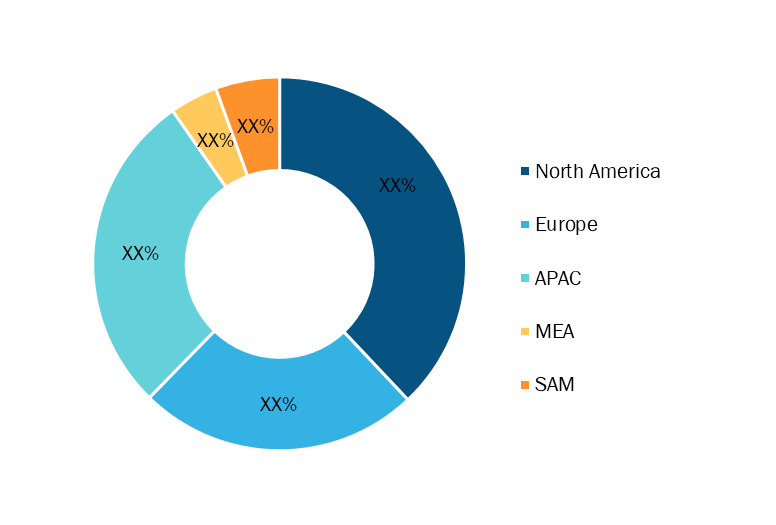Pressing Need of E-Scrap Recycling in APAC Countries to Provide Growth Opportunities for E-scrap Recycling Market during 2021–2028
According to our latest market study on “E-Scrap Recycling Market Forecast to 2028 – COVID-19 Impact and Global Analysis – by Product Type and Processed Material,” the e-scrap recycling market is projected to reach US$ 8,199.04 million by 2028 from US$ 3,222.13 million in 2021; it is expected to grow at a CAGR of 14.3% during 2021–2028.
Asia Pacific countries have launched several programs to achieve the environmentally sound management (ESM) of e-waste. However, various challenges hamper the success and effectiveness of these programs. A lack of infrastructure and financial resources are the major challenges faced by Asia Pacific countries while complying with the requirements stated under such programs. Identifying relevant players and encouraging cooperation are the keys to addressing these difficulties. Collecting, sorting and disassembly, and end-processing are the three stages of e-waste recycling. These procedures are conducted by informal garbage recycling businesses in Asia Pacific countries, lacking expertise and professional treatment. The scope of the formal e-waste recycling sector is severely limited in these countries. The informal sector could handle the first two steps of e-waste recycling with minimal environmental and health consequences. However, if it performs the end-processing, it could significantly degrade the surrounding environment. These factors are propelling the growth of e-scrap recycling market in APAC region.
The social, environmental, and economic boundaries are the major factor of concern while transferring standard technology to Asia Pacific countries. Moreover, the informal sector's dominance and success must be considered before commencing such technology transfer to these countries. The key to a successful e-waste management program is innovative models that allow the informal sector to adopt safe recycling methods. On the other hand, hazardous operations are also outsourced to professional recycling recyclers in the e-scrap recycling market. The need to emphasize encouraging the informal sector to increase the e-waste collection and pre-processing efforts through training and technology transfer is expected to create enormous opportunities for the e-scrap recycling market players.
The e-scrap recycling market is segmented on the basis of product type, processed material, and geography. Based on product type, the e-scrap recycling market is segmented into IT & telecom equipment, small household appliances, large white goods, consumer electronics, and others. The e-scrap recycling market, by processed material, is segmented into metal, glass, plastic, and others.
E-Scrap Recycling Market — by Region, 2020

E-scrap Recycling Market Strategic Insights by 2031
Download Free Sample
E-scrap Recycling Market Size and Forecast (2021 - 2031), Global and Regional Share, Trend, and Growth Opportunity Analysis Report Coverage: By Product Type (IT & Telecom Equipment, Small Household Appliances, Large White Goods, Consumer Electronics, and Others), Processed Material Type (Metal, Glass, Plastic, and Others) and Geography
E-scrap Recycling Market Strategic Insights by 2031
Download Free SampleE-scrap Recycling Market Size and Forecast (2021 - 2031), Global and Regional Share, Trend, and Growth Opportunity Analysis Report Coverage: By Product Type (IT & Telecom Equipment, Small Household Appliances, Large White Goods, Consumer Electronics, and Others), Processed Material Type (Metal, Glass, Plastic, and Others) and Geography
Impact of COVID-19 Pandemic on E-Scrap Recycling Market
The COVID-19 pandemic hindered the growth of several industries, such as automotive, manufacturing, semiconductor & electronics, mining, oil & gas, aviation, in 2020. A rise in the spread of SARS-CoV-2 urged governments across the world to impose strict restrictions on vehicles and human movements. Travel bans and business shutdowns resulted in the limited production and availability of commodities, goods, and services. According to a United Nations report, global electronics and electrical equipment sales dropped in the first three quarters of 2020. More than 5 million metric ton of future e-waste were prevented during that period. However, there are already indicators that the e-waste halt would be transitory, just as air pollution levels returned to pre-COVID levels after the lockdowns were lifted and atmospheric carbon levels reached new highs despite a record decline in emissions in 2020.
According to the United Nations, more people in developing countries have access to modern technologies. Shorter product life cycles and more complex device repair processes drive the consumer preference toward replacement rather than repair. The e-waste footprint rose from ~49 million to ~60 million metric ton per year during 2014–2019. During the COVID-19 pandemic, the use of electronic devices has increased in many sectors, resulting in more e-waste generation, thereby boosting the e-scrap recycling market growth.
DOWA HOLDINGS Co., Ltd; Ecoreco Ltd.; Electronic Recyclers International, Inc. (ERI); Enviro-Hub Holdings Ltd.; Global Electric Electronic Processing (GEEP); JX Nippon Mining and Metals Corporation; Sims Metal Management Limited; Stena Metall AB; Tetronics Limited; and Umicore are among the key players profiled during the study of the e-scrap recycling market. In addition, several other important companies were studied and analyzed during the course of this market research study to get a holistic view of the e-scrap recycling market and its ecosystem.
Contact Us
Phone: +1-646-491-9876
Email Id: sales@theinsightpartners.com